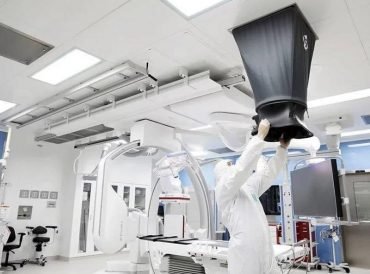Comprehensive Guide to ISO 14644 GMP Cleanroom Validation
In this article we will discuss about the Comprehensive Guide to ISO 14644 GMP Cleanroom Validation offered by the FTS Lifecare

In the realm of pharmaceuticals, biotechnology, and healthcare, maintaining pristine and controlled environments is paramount. Cleanrooms serve as the cornerstone for ensuring product quality, safety, and efficacy. However, merely having a clean is not enough; it must undergo rigorous validation to adhere to Iso 14644 gmp cleanroom validation guidelines and Good Manufacturing Practice (GMP) standards.
Understanding ISO 14644: The Framework of Cleanroom Standards
ISO 14644 lays down the framework for cleanroom classification based on airborne particulate cleanliness. It defines various cleanliness classes ranging from ISO Class 1 to ISO Class 9, with ISO Class 1 being the most stringent. Each class has specific limits for airborne particle counts per cubic meter, delineating the level of cleanliness required for different applications.
Importance of GMP in Cleanroom Validation
GMP regulations ensure that pharmaceutical and healthcare products are consistently produced and controlled according to quality standards. Cleanroom validation within the context of GMP involves rigorous testing and documentation to demonstrate that the facility consistently meets predetermined cleanliness and operational parameters.
Key Components of Cleanroom Validation
Design Qualification (DQ)
The first step in cleanroom validation involves assessing the design specifications to ensure they meet regulatory requirements and operational needs. This includes evaluating airflow patterns, filtration systems, material compatibility, and structural integrity.
Installation Qualification (IQ)
IQ verifies that the cleanroom is installed correctly and according to the approved design specifications. It involves testing components such as HVAC systems, filters, lighting, and utilities to ensure they function as intended and meet regulatory standards.
Operational Qualification (OQ)
OQ verifies that the cleanroom operates within established parameters under dynamic conditions. This entails testing operational processes, environmental controls, equipment functionality, and personnel practices to ensure consistent performance.
Performance Qualification (PQ)
PQ evaluates the ability of the cleanroom to consistently produce products within specified quality standards. This involves conducting environmental monitoring, particle counting, microbial testing, and other performance assessments under simulated production conditions.
Cleanroom Validation Protocols and Testing Procedures
Particle Counting
Particle counting is a fundamental aspect of cleanroom validation, performed using specialized particle counters to measure airborne particulate levels. Testing involves sampling air at various locations and comparing particle counts against predetermined ISO cleanliness standards.
Airflow Visualization Studies
Airflow visualization studies assess the effectiveness of ventilation systems and airflow patterns within the cleanroom. Techniques such as smoke studies or airflow visualization kits are utilized to identify areas of turbulence, dead zones, or cross-contamination risks.
Filter Integrity Testing
Filter integrity testing ensures that HEPA (High-Efficiency Particulate Air) or ULPA (Ultra-Low Penetration Air) filters function effectively in removing airborne contaminants. Testing methods include aerosol challenge testing, DOP (Di-Octyl Phthalate) testing, or photometric scanning to verify filter integrity.
Microbiological Monitoring
Microbiological monitoring involves testing for viable microorganisms in the cleanroom environment. Surface swabs, settle plates, and air samplers are used to detect microbial contamination and assess the efficacy of cleaning and disinfection protocols.
Documentation and Regulatory Compliance
Comprehensive documentation is essential for cleanroom validation, including protocols, test results, SOPs (Standard Operating Procedures), and validation reports. This documentation serves as evidence of regulatory compliance and facilitates audits by regulatory agencies such as the FDA (Food and Drug Administration) or EMA (European Medicines Agency).
Continuous Monitoring and Maintenance
Cleanroom validation is not a one-time process but requires ongoing monitoring and maintenance to ensure continued compliance with ISO 14644 and GMP standards. Routine testing, calibration of equipment, and periodic revalidation are necessary to uphold cleanliness and operational efficiency.
Conclusion
In conclusion, ISO 14644 GMP cleanroom validation is a critical aspect of pharmaceutical and healthcare manufacturing, ensuring that cleanrooms maintain the highest standards of cleanliness and operational integrity. By following rigorous validation protocols, documenting procedures, and conducting regular monitoring, organizations can uphold regulatory compliance, mitigate contamination risks, and safeguard product quality and patient safety.
What's Your Reaction?











![Wireless Connectivity Software Market Size, Share | Statistics [2032]](https://handyclassified.com/uploads/images/202404/image_100x75_661f3be896033.jpg)




